Undergrad Student Picnic
Find out what SIB is all about and meet other IB majors!!
Tuesday, September 17
5-7 PM
Illini Union-Rooms A, B and C
Meet Faculty
Free Food (while it lasts)
Free T-shirt
RSVP: Staci Sears, 333-3044

Undergrad Student Picnic
Find out what SIB is all about and meet other IB majors!!
Tuesday, September 17
5-7 PM
Illini Union-Rooms A, B and C
Meet Faculty
Free Food (while it lasts)
Free T-shirt
RSVP: Staci Sears, 333-3044
Professor Ray Ming (plant biology) will direct the new joint center in genomics and biotechnology – the center is a collaboration between Integrative Biology and Fujian Agriculture and Forestry University. With an initial investment of $30 million US, the new center promises to open new collaborations between the two institutions and create new opportunities for student exchanges. Professor Feng Sheng Hu, head of plant biology, was instrumental in negotiating the creation of the new center, which will be open for business in the next two months.

For the second year in a row, SIB faculty, students and staff led a week-long “Girls Do Science!” camp for girls entering 2nd – 6th grade, in partnership with Orpheum Children’s Science Museum. Camp co-directors were Carla Cáceres (Animal Biology/SIB), Katy Heath (Plant Biology/SIB), and Katie Hicks (Education Director at the Orpheum). Campers explored the Pollinatarium with Lesley Deem, where they learned about insects and ticks, ran through Meadowbrook Park for a scavenger hunt of prairie plants, and participated in SIB faculty research on microbes (Katy Heath), mammals (Karen Sears) and plankton (Carla Cáceres) at the Natural History Building.
Staff and graduate and undergraduate students (too many to name!) from SIB and other units such as the graduate Program in Ecology, Evolution and Conservation Biology, Natural Resources and Environmental Sciences and the Department of Cell and Developmental Biology also participated. The camp was sponsored by grants from the National Science Foundation (DEB 1120804 and DGE 1069157).









For those of you that missed it, we have a video of the School of Integrative Biology 2013 Convocation!
The speaker was Dr. Alexander A Goloff, alumnus of the class of 1973 with a Ph.D. in Physiological Ecology in the Plant Sciences.
In the sciences it’s easy to get in the mindset of “go to college, go to grad school, get a post doc, be a professor” for your career. While this path works, I want to talk about the crazy idea of breaking from the path for a year or two before you throw yourself into a PhD program. (Note: this applies to people applying to professional schools like medicine or law, as well.)
To preface, going into grad school straight out of college does work. There’s a lot of people who do it and do it well. If you want to make a career as a researcher, starting grad school early lets you throw yourself at the rigors of a PhD while you’re young and energetic. But grad school is a huge commitment. Do you like fieldwork enough to get up at 7am on a Sunday if you have to? How do you react to the concept of motivating yourself to read a textbook, as opposed to it being assigned reading, for (probably) the first time? Are you ok with cutting your free time to the point that it’ll be a challenge to be simultaneously in that weekly journal club and working on that novel you’ve always thought about?
If you like your subject and are motivated, none of these questions should be that intimidating. But there’s nothing forcing you to throw yourself into all that straight out of college. Dr. John Cheeseman, the former head of IB Honors, continually tried drilling into my head the idea that I don’t have to go to grad school right away, that there are literally dozens of other cool options to consider. Your post-college path can veer wildly away from research, taking you across the world and letting you try things you’ve never had the chance to do before.
Yeah, I didn’t believe him. If you’re anything like I was as an undergrad, all of that will sound like a nice what-if, the cool life of someone who’s not in your shoes. Applying to a PhD program as a senior in college meant having knowledge and stability on what would happen in the half decade (at least) after college. With unemployment as high as it is right now, let’s just take what we can get, right? And with literally the whole world open for the first time, I found myself surprisingly drawn to the idea of “settling down” into a PhD program, where I know what I’m doing in a month, this summer, next year.
The point of this post is to pull a Cheeseman and encourage you to think outside the box. The following alternatives to immediately starting grad school are applicable to new graduates looking for something to fill a few months before more permanent plans, new seniors looking for stuff to do after graduation, and sophomores and juniors looking for summer plans.
1. Teach English or do research in another country on a Fulbright grant
Starting with the option that deviates the least from the research path, the Fulbright is something I highly recommend students interested in research consider. The Fulbright is funding for one year to teach English or do research with a local organization in another country (i.e. you can’t work with an American researcher stationed in Panama). If you want to do research someday, this is a fantastic opportunity to try independent research out, not have it go as you expected, and then learn how to better conduct research. When you enter grad school for real, you’ll have the knowledge of your Fulbright year as a head start on learning to do quality work. Also, the experience of living in another country for a year, especially fresh out of college, teaches you a lot about yourself. (If you’re interested, visit topscholars.illinois.edu or e-mail topscholars@illinois.edu for more information. The priority deadline is July 1.)
2. Work as a field assistant / do a lab internship
Part-time work in the area of research that interests you, especially if you can find something that pays or at least breaks even (e.g. housing is paid for), is awesome. For biology fieldwork, job boards like those of University of Texas A&M, the Ornithological Societies of North America, and Partners in Amphibian and Reptile Conservation constantly have researchers looking for people to help with fieldwork.

If you can make it to Australia, Tasmanian devils need research love, too
You could study lizards in the Tucson desert, search for crabs on beaches in Washington state, or even end up in Australia watching fairy wrens through binoculars. The options are out there! A Fulbright alumna I know did the ‘fieldwork rock star’ lifestyle for a year, where she hopped from field project to field project. She barely broke even financially, but she got to spend a year traveling the world while simultaneously advancing her career. This is a great way to get exposed to a lot of types of research, too, and see what you like the best.
3. Ditch research for a bit
As much as you might like biology, it’s only one side of you. Ever wanted to tutor kids in creative writing? Find an apartment in San Francisco and intern at 826 National. Does doing manual labor on a farm in exchange for food and a place to sleep sound awesome? Check out work exchange programs like WorkAway. When I interviewed at Cambridge (conflicted, I applied to do a PhD in Cambridge the same year I applied for the Fulbright. I didn’t get in) and was discussing the potential for gap year(s) before grad school, my proposed adviser there said about 4-5 years without science research should be the upper limit between finishing college and starting grad school. That’s a whole lot of time to pick cocoa fruit and build hiking trails in Costa Rica.
Conclusions
Graduating college is intimidating. Not knowing what happens next is scary. But it can also be exciting. I strongly believe (finally) in the benefit of taking time off, whether it be getting experience with research or trying something totally different. If you like the crazy different path you took, awesome! If it wasn’t what you thought and you miss research, grad schools are accepting applications every year. As I mentioned in the previous blog post, grad schools will care more about your experiences with research than whatever grade you got in physics.This is one of the best times of your life to try something new. Don’t be afraid of trying something different just because you don’t know how it’ll turn out.
-Matt
For more information about academic advice, summaries of scientific articles, and discourses on metal music, check out my blog (www.mattgrobis.blogspot.com) or e-mail me at matt.grobis[at]gmail[dot]com.
Hi all!
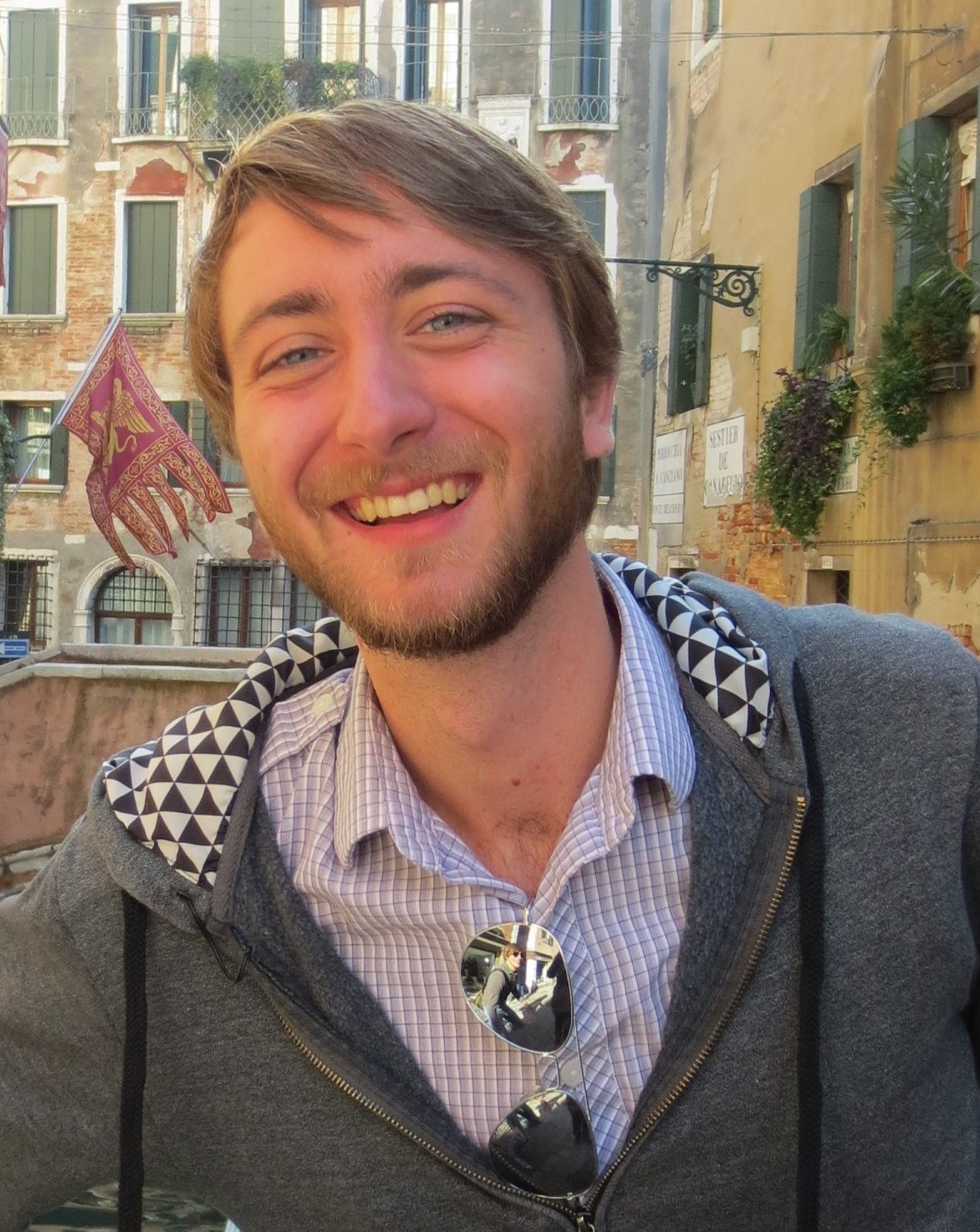
My name is Matt Grobis. I graduated in May 2012 from the Integrative Biology Honors major and am currently pursuing a Fulbright grant at the Max Planck Institute for Ornithology. With commencement coming up this weekend (congrats to all IB graduates!), I thought I’d share the three biggest lessons I’ve learned since leaving the college bubble.
1. You’ll make mistakes… and that’s ok!
When I began my Fulbright, I was anxious to make the most of it. I had been on the waitlist for ten weeks, so I felt incredibly lucky to have this opportunity at all. I became involved in three separate research projects: formulating and carrying out an independent project on social foraging in wild great tits, helping a graduate student in a project on sleep and predation risk in wild great tits, and recording and analyzing mate-pair vocalizations in captive ravens. I became essentially buried in work, and the grad school applications, bio GRE, NSF-GRFP funding application, and furniture shopping for a new apartment added layer after layer of stress to my life. I made two crucial mistakes: underestimating how much time fieldwork takes to prepare for and carry out, and overestimating how much I can get done in one day. November was pretty miserable, and it was made so much harder because I wasn’t used to things not going well.
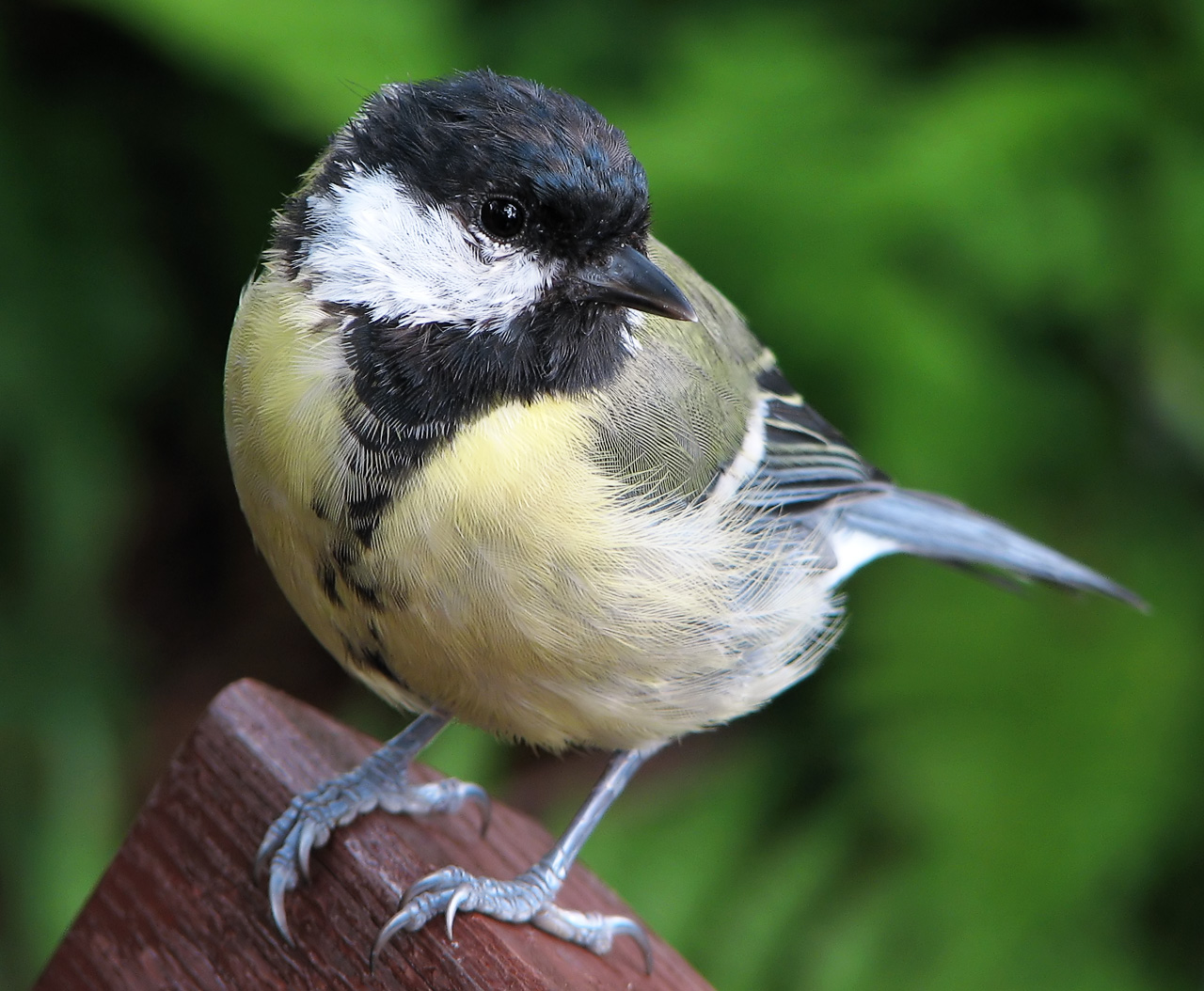
Great tits (Parus major) don’t always cooperate with your planned methodology
What the experience taught me, though, is that it’s totally fine to make mistakes. They’re the best way you learn. In undergrad, academic success has a pretty straightforward formula: pay attention in class, study before the exam, profit. It’s a lot different outside of college, where the path from Point A to Point B isn’t so obvious. You will make mistakes as you try to figure this out, but that’s how you grow. While working at the Institute has been a bit of a “tough love” learning experience, I feel I’ve grown so much as a researcher because there was no one to pull me out when I dug myself into that hole. As much as my research group liked me and wanted to help with my work, ultimately the responsibility was on me to fulfill the promises I made to my adviser and group members. As tough as it was, it’s one of the best things that could have happened to me during my year here.
2. Grades matter(ed), but experiences matter more
While your undergrad grades are important, they rarely come up in conversations in grad school, and probably even less so in the real world. Much more important to your future self (and future employers) are your experiences with what interests you. Interested in science journalism? Start a weekly science blog and see how you like it. Interested in field research? E-mail a university professor and ask to volunteer with the field season. I was amazed to learn that my adviser at the Institute is almost always looking for volunteers to help grad students with their fieldwork. Sometimes the professor can pay for your accommodation, too. In exchange for your help, you learn how to do good research by observing trial and error, master a ton of field techniques, and see whether this is something you want to continue with or not.
3. Got a question? Send an e-mail
Success is never completely independent. Everyone you look up to has had help along the way, and you’d be surprised at how willing people are to pay it back (especially if you’re thankful and nice to them). Go on LinkedIn and find U of I alumni doing what you want to do and invite them to coffee. E-mail grad students doing the research that sounds cool and hear their story. It’s ok not to get responses; don’t hassle them. But if you’re humble and genuinely interested, people will always be willing to help.
– Matt
For more information about academic advice, summaries of scientific articles, and discourses on metal music, check out my blog (www.mattgrobis.blogspot.com) or e-mail me at matt.grobis@gmail.com.
As featured in Inside Illinois, Illinois graduate students won a record number of NSF Graduate Research Fellowships this year. Several students in Integrative Biology are among the awardees. Let’s congratulate them for their hard work!
This year’s awardees from IB are:
▪Lorena Rios Acosta
▪Matias Cristobal Fernandez
▪Matthew Grobis
▪Daniel Joseph Urban
▪Kevin James Wolz
IB students accorded Honorable Mention are:
▪Cassie Wesseln
▪Kristen Bishop
▪Christopher Holmes-Singh
▪Allen Victor Lawrance
▪John Michael Maddux
▪Selina Ariel Ruzi
These lists come from the NSF-GRF Fastlane database. For additional information on this year’s competition, see the NSF-GRF main page.
The Illinois Biomathematics Research Experience Program is a year-long research experience in mathematical biology. Despite the strong demand for students that are trained in biomathematics, undergraduate mathematics and biology majors still proceed largely along parallel isolated tracks, with many biology students acquiring very few mathematical skills and concepts, while many mathematics students remain relatively uninformed about biology. The Illinois Biomathematics Research Program brings mathematics and biology students together under joint mentorship by biologists and mathematicians. Our goal is to contribute a generation of scientists and mathematicians to meet the new challenges at the interface between these two disciplines. Additional information about the program can be found here: http://www.math.uiuc.edu/biomath/
The 2013 National Science Foundation funded fellows are working on the three projects under the guidance of faculty from the Departments of Mathematics and Animal Biology.
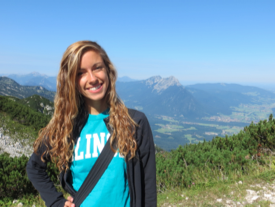 Gene Regulation and Limb Development
Gene Regulation and Limb Development
Kari Kosog (Integrative Biology), Rachel Poe (Mathematics), Dr. Zoi Rapti (Mathematics), Dr. Karen Sears (Animal Biology)
Hi! My name is Rachel Poe, and I’m a sophomore researching mammalian limb development with Dr. Zoi Rapti and Dr. Karen Sears. I’m a mathematics major and a computer science and biology enthusiast. Needless to say, I am really excited to be a part of the U of I BioMath team this year. Before I came to school, I was convinced that I had to choose just one subject to study, and was disappointed that I wouldn’t be able to use multiple areas of interest for one purpose. But I quickly discovered that this was not the case — and now I get to use differential equations to model gene interactions in the process of limb growth! I can’t say that the project is without challenges, and I still have a lot to learn. One of the challenges for me has been connecting the more advanced biological concepts with the math models. Although I really enjoy biology, I don’t have as strong a background in it as I do math. But I’m excited by challenges and am always looking for something new to learn. That’s one of the reasons I’m excited to be working on this project — I’m learning so much along the way, and I know I’ll always have more to learn! I look forward to spending my summer in full-time research and exploring all the things I have yet to discover.
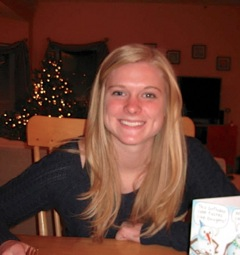 Hello there, my name is Kari Kosog, and I am currently a sophomore majoring in Integrative Biology and German. I took the Biomath class because it sounded interesting and like a fresh way to look at things. I really enjoyed it and decided to apply for the internship, and I am now working on a project under the supervision of Dr. Karen Sears and Dr. Zoi Rapti looking at the gene regulatory network in limb development. One of my favorite things about this project is that mapping gene networks mathematically is a relatively new field. I will be working in the lab with Dr. Sears to evaluate the gene networks. The math portion of the project is definitely new to me. I have a strong math background but have never tried to model anything. This is my first major project in a lab, and I am so excited to gain experience, learn from our advisors, and begin a life of scientific discovery!
Hello there, my name is Kari Kosog, and I am currently a sophomore majoring in Integrative Biology and German. I took the Biomath class because it sounded interesting and like a fresh way to look at things. I really enjoyed it and decided to apply for the internship, and I am now working on a project under the supervision of Dr. Karen Sears and Dr. Zoi Rapti looking at the gene regulatory network in limb development. One of my favorite things about this project is that mapping gene networks mathematically is a relatively new field. I will be working in the lab with Dr. Sears to evaluate the gene networks. The math portion of the project is definitely new to me. I have a strong math background but have never tried to model anything. This is my first major project in a lab, and I am so excited to gain experience, learn from our advisors, and begin a life of scientific discovery!
We will specifically be looking at the feedback loops of the growth factors including sonic hedgehog, Gremlin 1, fibroblast growth factor (FGF), and Bone Morphogenic Protein 4 (BMP4). We will be comparing the differences between chicken, bats and opossums. The figure (Zellner 2009) shows an example of the network we will be working with. It is also an example of how the genes Sonic Hedgehog, Gremlin 1, BMP4, and FGF work together in regulatory loops. By creating a differential equation to map the feedback and regulatory loops, we can predict the effect of each gene on the system.
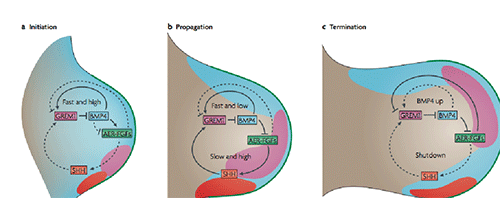 Figure from:
Figure from:
Zeller, R., Lopez-Rios, J., Zuniga, A. December 2009.Vertebrate limb bud development: moving towards integrative analysis of organogenesis. Nature Reviews, 10. 845-858.
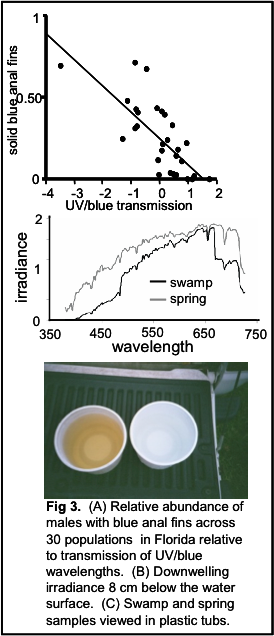 Visual Ecology of the Two Cone Visual System of Largemouth Bass
Visual Ecology of the Two Cone Visual System of Largemouth Bass
Shannon Stanis (Integrative Biology), Nick Sutton (Integrative Biology), Zach Turner (Mathematics), Dr. Lee DeVille (Mathematics), Dr. Becky Fuller (Animal Biology)
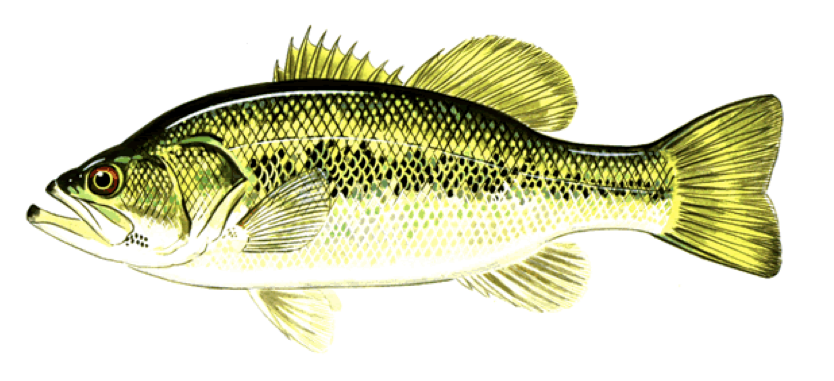 Our group is working hard on developing both a theoretical and a functional mathematical model of the two cone visual system of largemouth bass (Micropterus salmoides) to better understand the predatory behavior of these fish in varying water environments. Now, without further ado, let’s introduce the undergraduate researchers:
Our group is working hard on developing both a theoretical and a functional mathematical model of the two cone visual system of largemouth bass (Micropterus salmoides) to better understand the predatory behavior of these fish in varying water environments. Now, without further ado, let’s introduce the undergraduate researchers:
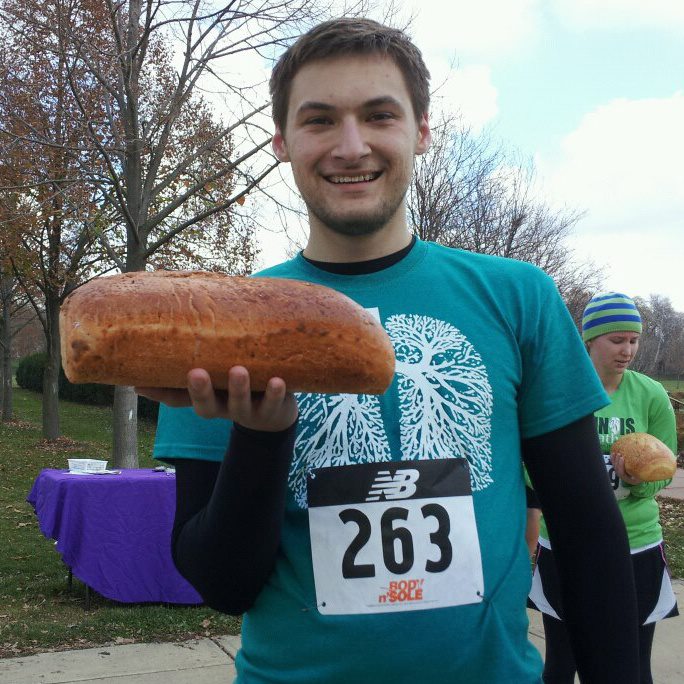 Hi everyone, my name is Zach Turner and I am a sophomore studying mathematics. Most of my work on this project thus far has been extracting equations from the paper we are studying and then converting that into a workable code that we can manipulate with various data inputs. To be honest, I actually have really enjoyed doing that! It’s frustrating working with computers when things aren’t going your way, but I love the satisfaction when it’s finally working. My biggest struggle is coping with my extreme lack of biological knowledge, but luckily my fellow group members Nick and Shannon are more than capable of explaining all the science to me. Currently our project is rather preliminary but I am very excited to see how far we can expand it in the future!
Hi everyone, my name is Zach Turner and I am a sophomore studying mathematics. Most of my work on this project thus far has been extracting equations from the paper we are studying and then converting that into a workable code that we can manipulate with various data inputs. To be honest, I actually have really enjoyed doing that! It’s frustrating working with computers when things aren’t going your way, but I love the satisfaction when it’s finally working. My biggest struggle is coping with my extreme lack of biological knowledge, but luckily my fellow group members Nick and Shannon are more than capable of explaining all the science to me. Currently our project is rather preliminary but I am very excited to see how far we can expand it in the future!
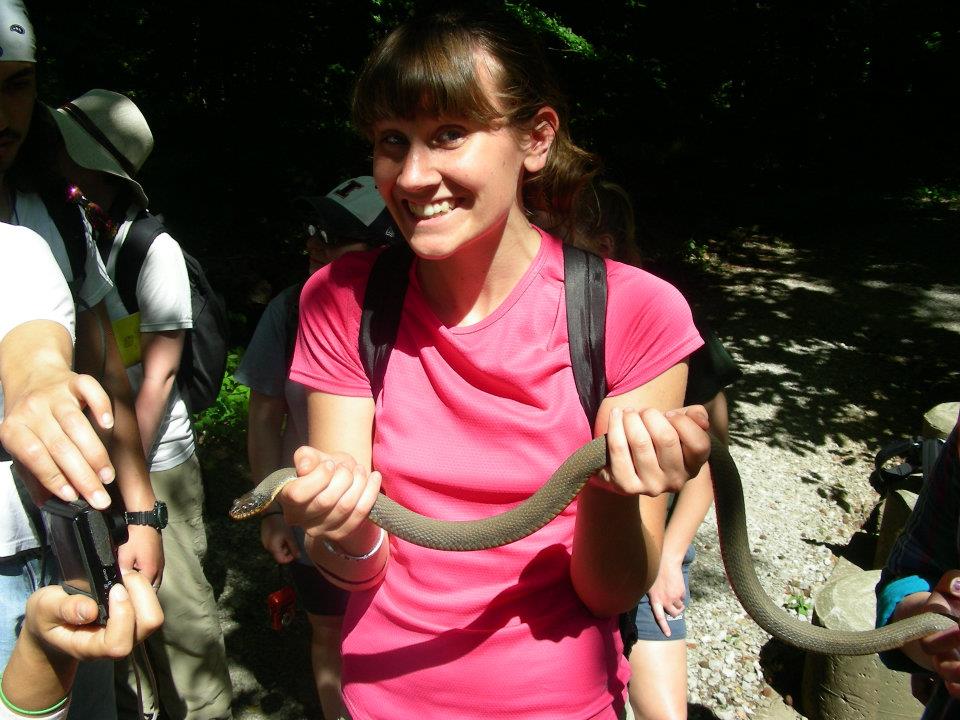 I’m Shannon Stanis, a senior double majoring in Integrative Biology and Psychology. I have been working in Becky Fuller’s lab for three years researching the visual system of killifish and now I am really excited to work with Zach and Nick to research their predator, the largemouth bass. Biomath is a perfect way to satisfy my scientific curiosity. We have been reading papers and sitting down together to talk through figuring out exactly what we want to know and how we are going to figure it out. I’m looking forward to lots of time with Zach, Nick, and, of course, the bass, to complete our behavioral assays this summer and integrate it into our model. We have a great team and I’m sure we will find some fascinating results!
I’m Shannon Stanis, a senior double majoring in Integrative Biology and Psychology. I have been working in Becky Fuller’s lab for three years researching the visual system of killifish and now I am really excited to work with Zach and Nick to research their predator, the largemouth bass. Biomath is a perfect way to satisfy my scientific curiosity. We have been reading papers and sitting down together to talk through figuring out exactly what we want to know and how we are going to figure it out. I’m looking forward to lots of time with Zach, Nick, and, of course, the bass, to complete our behavioral assays this summer and integrate it into our model. We have a great team and I’m sure we will find some fascinating results!
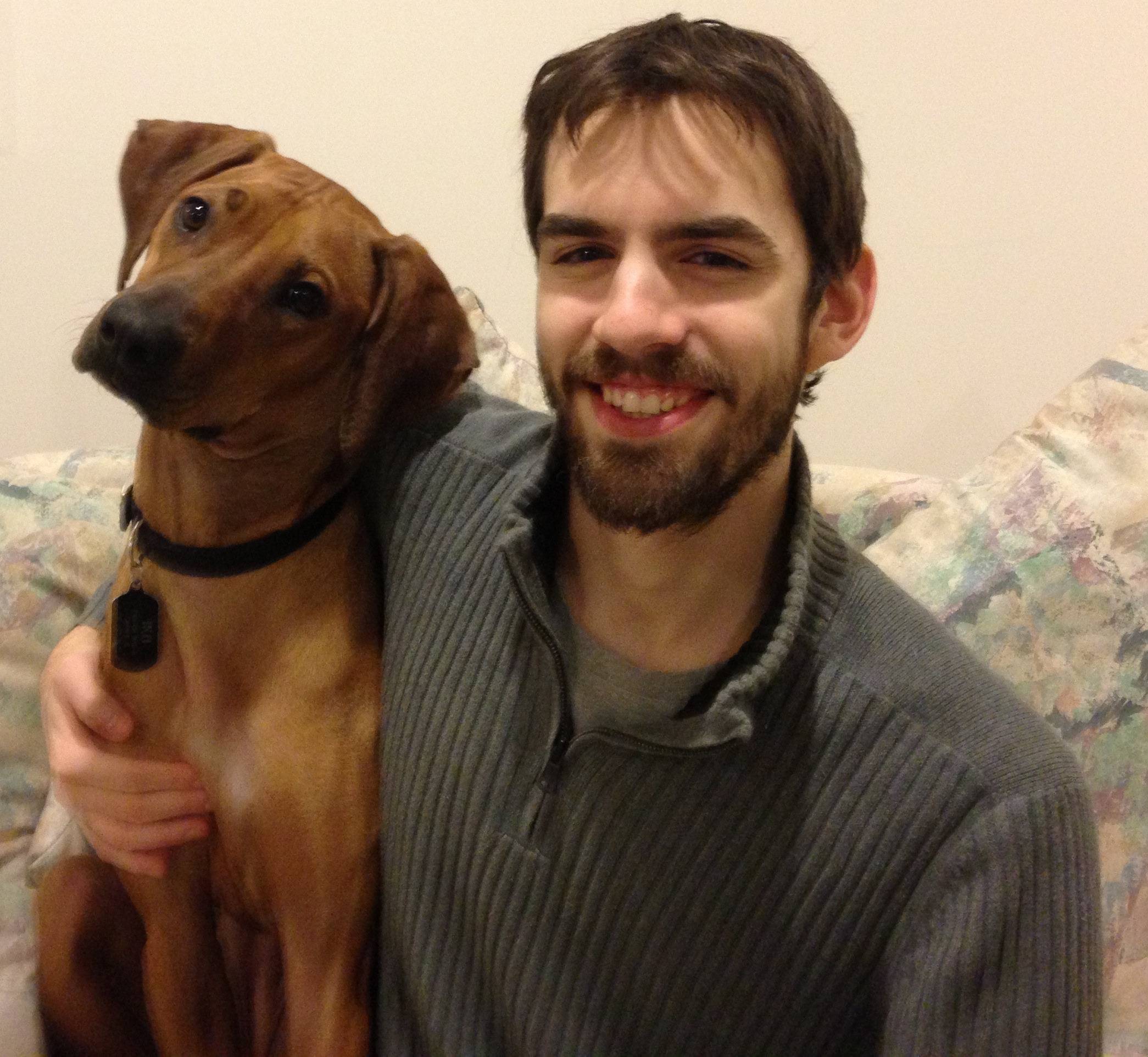 Hello, my name is Nick Sutton. I’m a sophomore majoring in Integrative Biology and aiming for a minor in Spatial and Quantitative Methods in Natural Resources and Environmental Sciences. As one of the biologists of the group, I’m working a lot with Shannon and Becky to help ensure the functionality of our mathematical model in order to keep it as realistic as possible. Once the summer hits, I’ll be helping in the design and implementation of the many behavioral assays we will be performing in order to test our model. This project is very exciting for me since I’m getting to experience a lot of visual ecology and mathematical programming at a deeper level than I would have thought possible as an undergrad. Though exciting, the project is not without its challenges, and I’d say that, for me, the most difficult aspect of this project is integrating the math and the biology. While I have a firm grasp of each subject separately, things tend to get a bit more complicated when you combine the two. Regardless of these challenges, I’m looking forward to continuing the project and seeing how well the results of our behavioral assays match up with our models.
Hello, my name is Nick Sutton. I’m a sophomore majoring in Integrative Biology and aiming for a minor in Spatial and Quantitative Methods in Natural Resources and Environmental Sciences. As one of the biologists of the group, I’m working a lot with Shannon and Becky to help ensure the functionality of our mathematical model in order to keep it as realistic as possible. Once the summer hits, I’ll be helping in the design and implementation of the many behavioral assays we will be performing in order to test our model. This project is very exciting for me since I’m getting to experience a lot of visual ecology and mathematical programming at a deeper level than I would have thought possible as an undergrad. Though exciting, the project is not without its challenges, and I’d say that, for me, the most difficult aspect of this project is integrating the math and the biology. While I have a firm grasp of each subject separately, things tend to get a bit more complicated when you combine the two. Regardless of these challenges, I’m looking forward to continuing the project and seeing how well the results of our behavioral assays match up with our models.
Ecology of Infectious Disease
Sarah Duple (Integrative Biology Honors), Glynn Davis (Mathematics),Ping Lee (Integrative Biology), Dr. Carla Cáceres (Animal Biology), Dr. Zoi Rapti (Mathematics)
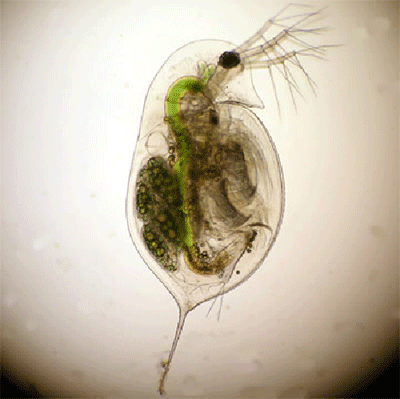 The 2013 BioMath Daphnia Disease team consists of three members, Sarah Duple- junior in Integrative Biology Honors, Ping Lee- senior in Integrative Biology, and Glynn Davis- sophomore in Mathematics. When we first arrived at the University of Illinois Urbana-Champaign as freshmen, we had no idea what we wanted to do for the next four years. Luckily, the U of I offers many courses that help students explore their interests in many different majors and fields. We all made a great decision and signed up for one of these courses, IB/Math 299 (Biomath), and it was the turning point of our college careers.
The 2013 BioMath Daphnia Disease team consists of three members, Sarah Duple- junior in Integrative Biology Honors, Ping Lee- senior in Integrative Biology, and Glynn Davis- sophomore in Mathematics. When we first arrived at the University of Illinois Urbana-Champaign as freshmen, we had no idea what we wanted to do for the next four years. Luckily, the U of I offers many courses that help students explore their interests in many different majors and fields. We all made a great decision and signed up for one of these courses, IB/Math 299 (Biomath), and it was the turning point of our college careers.
Throughout the course, we learned and explored the field of biomathematics and developed several research topics related to the ecology of infectious diseases. In 2012 (together with past team-member Adam Koss), we all worked together to study the dilution effect. The dilution effect is a concept in disease research by which biodiversity can potentially reduce disease prevalence. We specifically studied how disease dynamics change between a species of Daphnia, D. dentifera and its fungal pathogen Metschnikowia when a competitor species of D. dentifera, D. pulicaria is added to the system. We modeled the disease system using an ordinary differential equations system and also conducted biological experiments in the lab to obtain data to support our model predictions.
This year, the three of us are continuing to work with the Daphnia project but each focusing on different aspects of the system. Glynn is currently working on a three population mathematical model to determine how different parameters that are associated with negative fitness costs, such as feeding rate reduction, fecundity reduction, and per-spore infectivity affect virulence. Ping is also looking into the per-spore infectivity parameter, but specifically at how successful the spores are at transmitting the disease to different host genotypes, and how that affects the disease prevalence in the host population. Sarah is focusing on how different resource acquisition traits in the host and its competitors affect disease prevalence on different resource qualities.
In the coming months, we will all be working individually and collectively along with our advisors Dr. Carla Cáceres from Department of Animal Biology and Dr. Zoi Rapti from the Department of Mathematics. At the end of the summer we will be presenting our research at the 98th annual Ecological Society of America conference!
The Office of Undergraduate Research (OUR) at the University of Illinois is pleased to announce its spring 2013 competition for travel grants to subsidize the presentation of undergraduate research at professional conferences. Proposals should be submitted at https://illinois.edu/fb/sec/2164154 and the deadline for submission is 1 May 2013.
In order to apply, students will need to have information on the conference dates and location, evidence that conference participation has been confirmed, estimated expenses, and possible support from mentors and departments.
Please note that the travel grants are designed for students to present their research during the summer and fall semesters 2013 (another competition will be announced later in 2013). In addition, these travel grants are not designed to cover the entire cost of student participation (some departmental or college contribution is encouraged) nor can the grant be used to cover post conference participation.
Questions should be directed to ugresearch@illinois.edu
 An exciting opportunity for the SIB community has come forth this spring: The World of Biology Photo Competition! Anyone affiliated with SIB is eligible to submit up to three photographs in any of three categories: Nature, Biologists at Work, and Biological Imaging. Cash prizes will be awarded to 1st ($200), 2nd ($100), and 3rd ($50) place in each category.
An exciting opportunity for the SIB community has come forth this spring: The World of Biology Photo Competition! Anyone affiliated with SIB is eligible to submit up to three photographs in any of three categories: Nature, Biologists at Work, and Biological Imaging. Cash prizes will be awarded to 1st ($200), 2nd ($100), and 3rd ($50) place in each category.
Nature: Any photograph showing some aspect of the natural world.
Biologists at Work: Any photograph showing one or more biologists working in the laboratory or in the field.
Biological Imaging: Any photograph taken through or with the aid of a microscope or other imaging device.
To ensure that your photographs are in the competition, please mount each photograph on 11” x 14” quarter inch foam core backing, and drop them off along with electronic copies to the School of Integrative Biology office (286 Morrill Hall) by 5 PM Friday, April 19, 2013. There will also be an exhibit of the photographs at 612/614 Institute of Genomic Biology the following week from 3-5 PM on April 25, 2012.
Please feel free to download both the entry form and full instructions for the competition from this post by clicking on the following links: